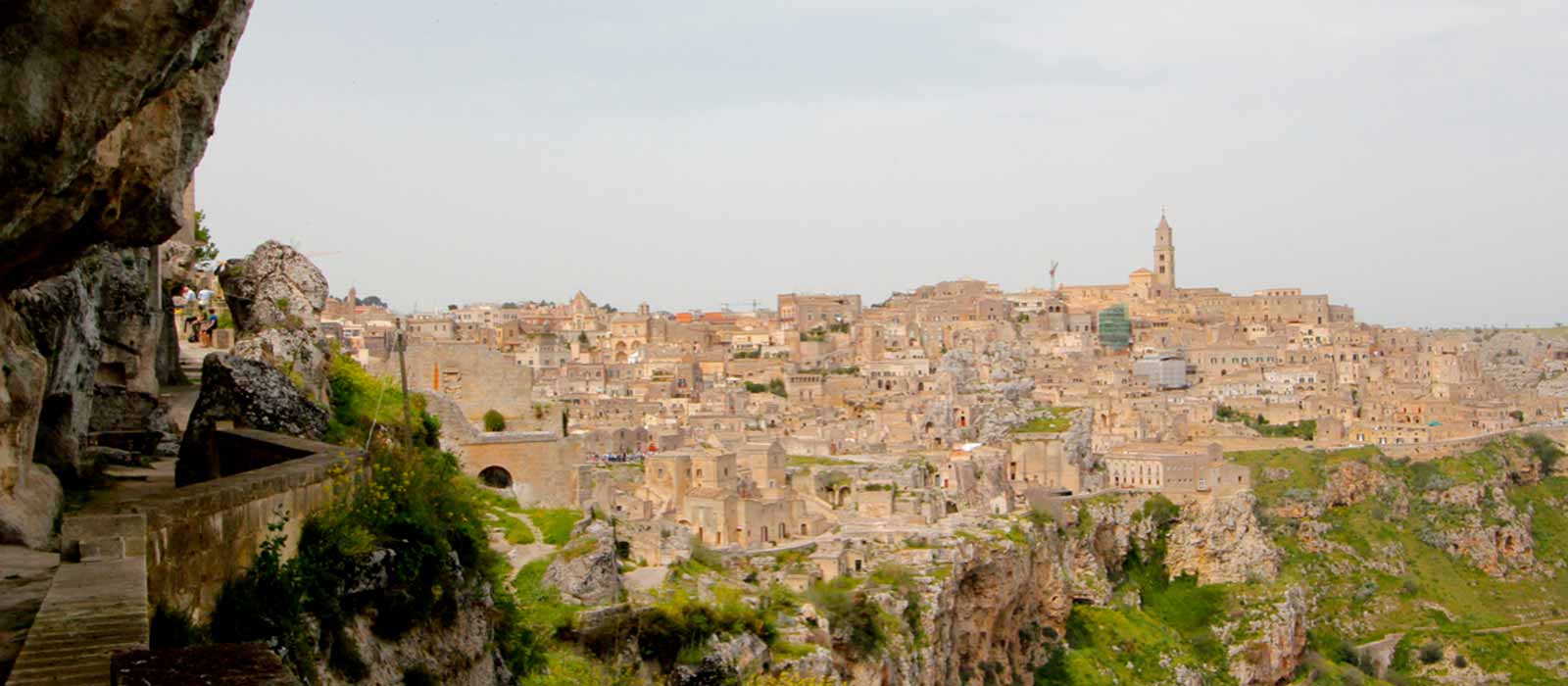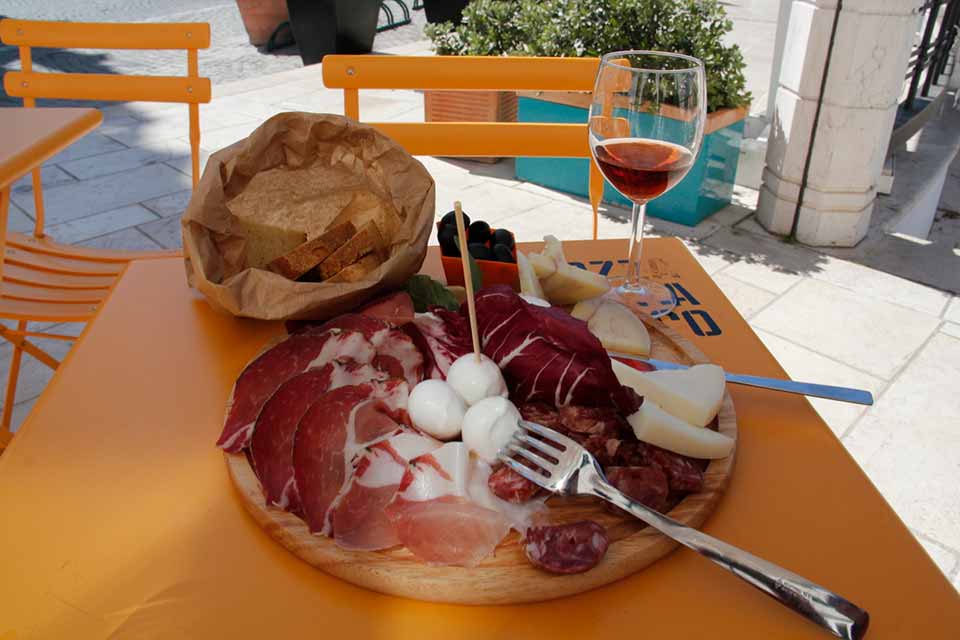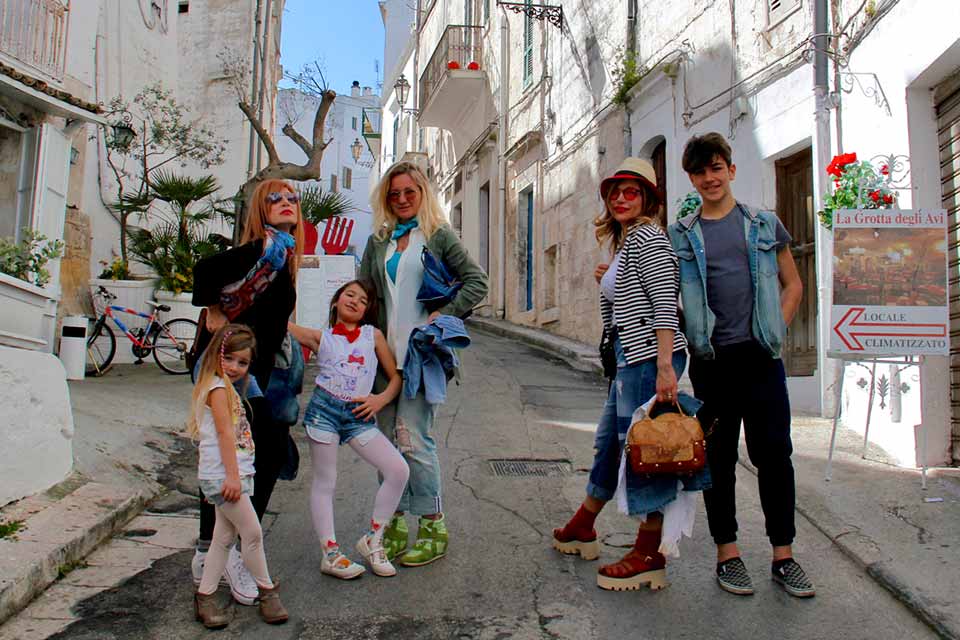
Old city in Puglia province Photo credit: Gerry Feehan
Spring in Italy – Rome and Puglia
On a lonely country road near Ostuni, in the Province of Puglia – the heel of Italy’s boot – I stopped to photograph a field of poppies in an olive grove. After a few happy snaps I jumped back in the car and motored on. Fifteen minutes later I reached for my daypack and realized in horror that I had left the pack (complete with camera lenses and phone) on the rock wall that fronted the poppy field. We sped back. The bag was gone. Impossible. We hadn’t been gone half an hour and there were no other cars on the road.
While I lay morosely in the ditch, tearing hair and gnashing teeth, my wife Florence calmly analyzed the situation: “Why don’t we call your Iphone?” We expectantly dialed from her cell. No answer. I moped back to the roadside. Florence then suggested, “Let’s have a picnic. Maybe whoever picked up your pack will come back.”
“Right,” I responded caustically, “to collect the 100,000 lira reward.”

We broke bread, cut cheese and sliced salami. I tried vainly to enjoy a cold Peroni on this otherwise beautiful day. It seemed impossible that, in the short time we had been away, someone could have spotted my satchel in a rock crevice on this remote country lane. “There must be another explanation,” I muttered, “maybe a conspiracy.”
An hour later we were disconsolately packing up when a faded 1960’s era Fiat Panda pulled up and stopped tentatively beside us. An elderly man with glasses thick as an olive-oil bottle gazed out from behind the wheel. He eyed us with a mixture of suspicion and curiosity. A young boy with equally opaque glasses – obviously a blood relative – peered shyly from the passenger seat. Together they began a lengthy, incomprehensible Puglian discourse – and only when satisfied that we understood the situation, did they proudly retrieve my bag from the back seat.
“Mille, mille grazie,” I said, confused but genuinely grateful. I wanted a picture but the old signor waived us off and the aged Fiat puttered slowly away. “Yup,” Florence remarked, “a conspiracy.”
For years my patient wife has been suggesting, “We should spend a month in Italy.” And for ages I nodded – and deferred. But last spring when the annual request edged toward an ultimatum, in the interests of marital harmony, I acquiesced.

As seasoned travellers we often tour by the seat of our pants, plans random, frequently pulling into a strange town late afternoon searching for accommodation. This has worked well in some places but, in a country where you no speaka da lingua, advance booking is wiser – and infinitely less stressful.
So when the plane touched down at Rome’s Leonardo da Vinci Airport in early April, our four weeks of lodging – three nights here, four nights there – were all booked. Even our ride into Rome was arranged. A driver awaited us, patiently displaying a “Mr. and Mrs. Feehan” sign. And twenty minutes later we were checking into a quaint B&B steps away from the Vatican.
We didn’t organize this trip on our own – nor did we use a tour company or travel agent. We employed a much better resource: Sandy, an acquaintance who loves Italy, has been there many times and knows exactly where to direct a couple of adventurous travellers in the land of the Azzurri.
Our friend fashioned the entire itinerary: four days exploring Rome, ten days in the south, a few days biking near San Marino and a final 10 days in the rolling hills of Tuscany. Her planning was so meticulous (right down to AirB&Bs in the heart of each town plus offering detailed day-trip ideas) that I feel we owe her a substantial commission – or maybe just a nice spaghetti dinner.
So for those looking for some free advice and a fool-proof schedule for your upcoming trip to Italy, Sandy’s phone number is…
Rome is a remarkable, fascinating place. This ancient capital of the empire is overflowing with architecture, museums, statuary, Roman ruins and wonderful old neighbourhoods. And despite the sprawling megalopolis that is modern Rome, its iconic sites (the Coliseum, Forum, Trevi Fountain, Spanish Steps, Pantheon and St. Peter’s) can all be visited in a day’s stroll.
But Rome is overwhelmed with tourists. On average 40,000 people a day cue up to shuffle obediently through the Vatican and the Sistine Chapel. April is allegedly shoulder season – and we had booked a “private tour” – but we still had to share Michelangelo’s artistic brilliance with a giant throng of gawking souls, heads uniformly craned toward the majestic ceiling.
Like many big cities Rome is a little seedy. Pope Francis has allowed the homeless to camp within meters of St Peter’s Square. Unfortunately this generous gesture does not add to the curb appeal of the Basilica. We felt a little uncomfortable at night, dodging snoring vagrants, cardboard houses, used needles and other discarded paraphernalia.

I’m not a big city guy so after four days with the hawkers and beggars and tourists snapping pictures with their “selfish sticks” I was happy to pick up our rental car and head for sleepy Puglia, in Italy’s delightful south.
Although it has millennia of history, Italy is actually a new country – only a few years older than Canada. Giuseppe Garibaldi rode in on his horse and unified all the disparate kingdoms in 1861. But even today northern Italians tend to look down their noses at their southern brethren. And reciprocally a hint of proud defiance defines the Puglian character.
Our first stop in the south was Matera, a UNESCO world heritage site renowned for its cliffside cave dwellings or sassi. These grottos have been continuously occupied since Neolithic times and the humble Materans are enormously proud of the “negative architecture” of these underground abodes.
One warm afternoon while we strolled a grassy cliffside path, a well-dressed middle-aged man stepped out from the shadows, cigarette dangling from his lips. He introduced himself as Fabrizio and invited us to visit his family sasso and the kitchen where traditional (tipica) food was served.
“Quanto?” I asked suspiciously, concerned about the cost. “For the cave, free,” he said, “and if you wish something to eat, you decide what to pay.” It was nearly 1 p.m. and we were somewhat peckish, so we warily accepted his invitation.
Thus began the most interesting and enjoyable afternoon of our Italian visit. After showing us the intricately hand-carved rooms where the ancients slept and stabled their animals – as well as the cisterns where water and wine were stored – Fabrizio led us up a narrow passage to his open-air kitchen overlooking Matera.
Then he started the service. First, the antipasti: crusty bread with four olive oil dips, each infused with a local herb, then bruschetta made from shredded garlic and ripe dried tomatoes, then an amazing assortment of meats, cheeses and vegetables.
I was nearly full when out came two different soups, a hearty beef broth and a lentil stew. Next was a crisp pizza. I quietly undid my belt beneath the table.

Fabrizio chatted constantly while he worked – a knowing smile on his face – educating us on local foods, customs and lifestyle. There was also an unending supply of wine, “vino rosso della casa,” vinted from primitivo grapes, which have been cultivated in this region for thousands of years.
There were so many courses I can’t recall them all – fish and more cheese were in there somewhere – but I know we finished with dolce (sweets) and a jolt of espresso.
Fabrizio’s motto is “less is more” but I’ve rarely eaten more in one sitting. Three hours after stumbling in on this amazing gastronomic and cultural experience, we stumbled out into the late afternoon sun. As we left Fabrizio called out, “Won’t you have some pasta Bolognese?” I think if we had kept eating he’d still be bringing out dishes.
And what was il conto you ask? He humbly, delightedly accepted 40 euro – about $60.
A couple of weeks later on the flight home, over the drone of jet engines, I asked Florence, “Why did we wait so long to visit Italy?” She raised her eyes toward the heavens, shook her head and said, “It must have been a conspiracy.” Then she smiled and nodded off.
Next time: Riccione and the Tuscan Hills
